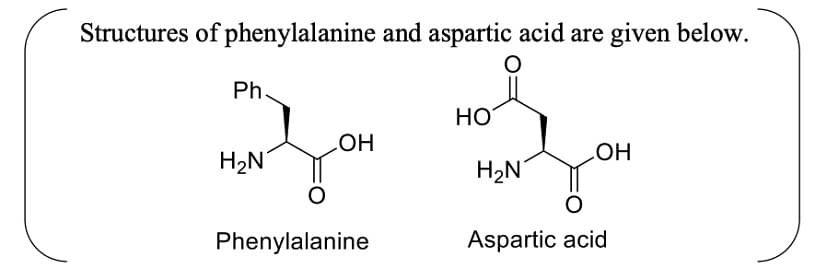Question:
One which does not stabilize secondary and tertiary protein?
One which does not stabilize secondary and tertiary protein?
Updated On: Sep 30, 2024
H-H linkage
S-S linkage
- Vanderwoal’s force
- Hydrogen bonding
Hide Solution
Verified By Collegedunia
The Correct Option is A
Approach Solution - 1
Among the given options, H-H linkage does not stabilize the secondary and tertiary structure of proteins. This is because H-H linkage refers to a hypothetical interaction between two hydrogen atoms, and such an interaction is not known to play a significant role in stabilizing protein structures.
On the other hand, hydrogen bonding, S-S linkage, and van der Waals forces all contribute to stabilizing the secondary and tertiary structure of proteins. Hydrogen bonding helps to stabilize the structure of protein helices and sheets, while S-S linkages are important for stabilizing the three-dimensional structure of many proteins. Van der Waals forces are weak, non-specific forces that contribute to the overall stability of protein structures, particularly in hydrophobic regions of the protein.
Answer. A
On the other hand, hydrogen bonding, S-S linkage, and van der Waals forces all contribute to stabilizing the secondary and tertiary structure of proteins. Hydrogen bonding helps to stabilize the structure of protein helices and sheets, while S-S linkages are important for stabilizing the three-dimensional structure of many proteins. Van der Waals forces are weak, non-specific forces that contribute to the overall stability of protein structures, particularly in hydrophobic regions of the protein.
Answer. A
Was this answer helpful?
1
0
Hide Solution
Verified By Collegedunia
Approach Solution -2
The secondary and tertiary proteins are stabilized by hydrogen bonds, disulfide linkages, Van Dar Wall's, and electrostatic forces of attraction.
Was this answer helpful?
0
0
Top Questions on Biomolecules
- Match List-I with List-II:

- CUET (UG) - 2024
- Chemistry
- Biomolecules
- For a double strand DNA, one strand is given below:

The amount of energy required to split the double strand DNA into two single strands is _____ kcal mol−1.
[Given: Average energy per H-bond for A-T base pair = 1.0 kcal mol−1, G-C base pair = 1.5 kcal mol−1, and A-U base pair = 1.25 kcal mol−1. Ignore electrostatic repulsion between the phosphate groups.]- JEE Advanced - 2024
- Chemistry
- Biomolecules
- Aspartame, an artificial sweetener, is a dipeptide aspartyl phenylalanine methyl ester. The structure of aspartame is

- JEE Advanced - 2024
- Chemistry
- Biomolecules
Given below are two statements:
Statement I: A unit formed by the attachment of a base to 1' position of sugar is known as nucleoside.Statement II: When nucleoside is linked to phosphorous acid at 5 -position of sugar moiety, we get neucleotide.In the light of the above statements, choose the correct answer from the options given below:- NEET (UG) - 2023
- Chemistry
- Biomolecules
- Glycosidic linkage between $C _1$ of $\alpha$-glucose and $C_2$ of $\beta$-fructose is found in
- JEE Main - 2023
- Chemistry
- Biomolecules
View More Questions
Questions Asked in JEE Main exam
- Find the acceleration of \(2\) \(kg\) block shown in the diagram (neglect friction)

- JEE Main - 2024
- Acceleration
- If \(|2A|^3 =21\) and \(\begin{bmatrix} 1 & 0 & 0 \\[0.3em] 0 & α & β \\[0.3em] 0 & β & α \end{bmatrix}\), then a is (if \(α,β∈I\))
- JEE Main - 2024
- Matrices
- Let \(α\) and \(β\) the roots of equation \(px^2 + qx - r = 0\), where \(P≠ 0\). If \(p,q,r\) be the consecutive term of non constant G.P and \(\frac{1}{α} + \frac{1}{β} = \frac{3}{4}\) then the value of \((α - β)^2\) is:
- JEE Main - 2024
- Geometric Progression
- Two lines \(L_1 \;\& \;L_2\) passing through origin trisecting the line segment intercepted by the line \(4x + 5y = 20\) between the coordinate axes. Then the tangent of angle between the lines \(L_1\) and \(L_2\) is
- JEE Main - 2024
- Tangents and Normals
- Rank of the word 'GTWENTY' in dictionary is _____ .
- JEE Main - 2024
- permutations and combinations
View More Questions
Concepts Used:
Biomolecules
Biomolecules are the most essential organic molecules, which are involved in the maintenance and metabolic processes of living organisms. These non-living molecules are the actual foot-soldiers of the battle of sustenance of life.
There are four major classes of Biomolecules – Carbohydrates, Proteins, Nucleic acids and Lipids.
- Carbohydrates are chemically defined as polyhydroxy aldehydes or ketones or compounds which produce them on hydrolysis.
- Proteins are another class of indispensable biomolecules, which make up around 50per cent of the cellular dry weight. Proteins are polymers of amino acids arranged in the form of polypeptide chains. The structure of proteins is classified as primary, secondary, tertiary and quaternary in some cases.
- Nucleic acids refer to the genetic material found in the cell that carries all the hereditary information from parents to progeny. There are two types of nucleic acids namely, deoxyribonucleic acid (DNA) and ribonucleic acid (RNA). The main function of nucleic acid is the transfer of genetic information and synthesis of proteins by processes known as translation and transcription.
- Lipids are organic substances that are insoluble in water, soluble in organic solvents, are related to fatty acids and are utilized by the living cell.



